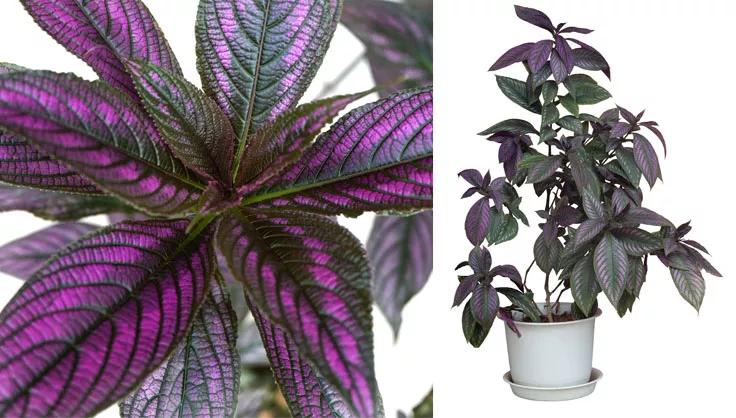How to Care for a Persian Shield Plant

Recommended Types
The classic variety of Persian Shield is most commonly found and recommended for its striking color and hardiness.
How to Care for Persian Shield
Whether you are a seasoned gardener or just starting out, caring for the Persian Shield is rewarding and manageable. Here’s how to ensure your Persian Shield thrives:
Light
Persian Shield does best in bright, indirect light. Too much direct sunlight can fade its vibrant colors, but too little light can lead to leggy growth.
Soil
A well-draining, fertile potting mix is ideal. Mixing in perlite and peat moss can help improve drainage and soil structure.
Fertilizing
During the growing season (spring and summer), feed your Persian Shield with a balanced, water-soluble fertilizer every 4 weeks.
Watering
Keep the soil consistently moist but not waterlogged. Water when the top inch of the soil feels dry to the touch.
Pruning
Pruning is necessary to keep the plant bushy and full. Pinch back the tips of the stems regularly to encourage branching.
Repotting
Repot the Persian Shield annually to refresh the soil. Choose a pot that’s one size larger than the current one.
Propagation
Propagation is easily done through stem cuttings. Place cuttings in water or soil, and they will root in a few weeks.
Common Problems with Persian Shield
While generally robust, Persian Shield can encounter some issues:
Pests and Diseases
Look out for pests like spider mites and aphids. Treat any infestations with insecticidal soap or neem oil.
Toxicity
Persian Shield is not known to be toxic to pets or humans, making it a safe choice for a family home.
Persian Shield FAQs
How do I maintain the vibrant color of my Persian Shield?
Ensure it receives plenty of bright, indirect light. Too much direct sunlight can wash out the colors, so find a balance.
Can Persian Shield be grown outdoors?
Yes, in warmer climates, Persian Shield can be grown outdoors. It thrives in partial shade and can be a stunning addition to a garden.
Why are the leaves of my Persian Shield drooping?
Drooping leaves can indicate underwatering or low humidity. Make sure the soil stays consistently moist and consider using a pebble tray or humidifier to increase humidity.
The Persian Shield is a visually striking plant that can bring a unique aesthetic to your garden or home. Its care is straightforward, making it suitable for gardeners of all skill levels. With the right conditions – bright light, consistent moisture, and regular fertilizing – your Persian Shield will grow lush and vibrant, showcasing its stunning purple foliage. Embrace the beauty of this plant and enjoy the vibrant touch it adds to your plant collection.
Print this Article:
Get the Dirt
Stay up to date on new articles and advice. Please fill out the information below.
